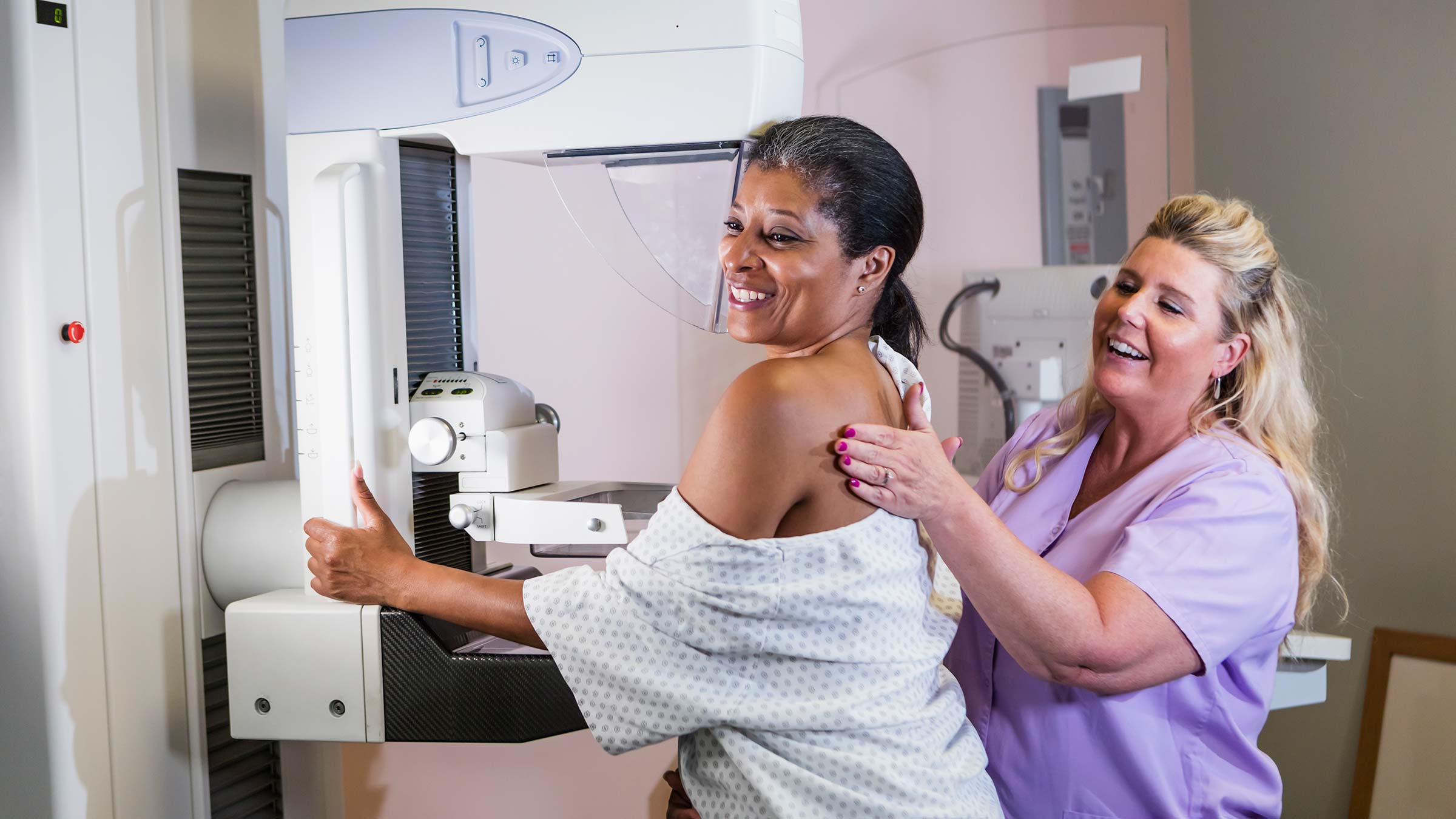
People at average risk for breast cancer are now advised to start getting a mammogram by age 40 – 10 years earlier than the previous recommended age of 50. That guideline comes from the United States Preventive Services Task Force (USPSTF), which provides national recommendations for medical screenings.
Every year, about 264,000 women across the country are diagnosed with breast cancer, according to the U.S. Centers for Disease Control and Prevention (CDC).
Nationally, about 42,000 women die from breast cancer each year, according to the CDC. However, by screening earlier and more frequently, we can save more lives.
Why age 40 for mammograms?
The recommendation to start screening mammography at age 40 is a step in the right direction for early breast cancer detection. While the task force recommends screening every two years, annual screening mammography saves the most lives and is recommended by many major medical organizations. In fact, the USPSTF, American Cancer Society and many others agree that annual screening mammography decreases breast cancer mortality. Starting annual screening at age 40 also helps detect cancers when they are smaller and more easily treatable, which may lead to less aggressive treatment.
Black and other minority women are more likely to be diagnosed with breast cancer at an earlier age. These women are also more likely to be diagnosed with advanced-stage and more aggressive forms of breast cancers, and they’re more likely to die of breast cancer. This makes annual screening mammography starting at age 40 even more essential for these patients.
This new guideline for earlier screening was a result of persistent advocacy efforts led by major medical societies, physicians and patient advocates at the state and national level, as well as new literature and critical evaluation of existing literature.
Mammograms are one of the first steps in early detection of breast cancer
Annual screening mammography saves the most lives and is recommended by many major medical associations.
A screening mammogram uses low-dose X-rays to evaluate the breast for abnormalities. At The Ohio State University Comprehensive Cancer Center – James Cancer Hospital and Solove Research Center (OSUCCC – James), we use the most advanced 3-D screening mammography technology to look for subtle changes in the breast.
All breast imaging performed at our locations is then interpreted by breast imaging radiologists. If an abnormality is found, additional testing with mammogram or ultrasound may be performed for further evaluation.
In addition to screening mammograms, we also offer supplementary screening with automated breast ultrasound (ABUS) for women who have dense breast tissue. Dense breast tissue is common and found in approximately 40% of women. Women at increased risk for breast cancer may also be recommended to have additional screening tests, such as a breast MRI.
Should women still perform breast self-exams?
You should get to know your breasts by becoming familiar with how they look and feel, which is called breast self-awareness. This may include a breast self-exam, which is best performed a few days after period ends if you are still menstruating. Symptoms of breast cancer can include a lump, change in size or shape of the breast and nipple, dimpling of the skin, or other skin changes.
If you notice an abnormality, you should have it further evaluated by a provider. It is also important to have clinical breast examinations by a provider to detect changes in your breasts. Many women who develop breast cancer never show symptoms, reinforcing the importance of screening mammograms.
When to have a breast cancer risk assessment, and how it’s different from screening mammography
It is recommended that all women, particularly Black and Ashkenazi Jewish women, have breast cancer risk assessment by age 25 and discuss with their doctor about whether early, more intensive screening is needed.
There are many factors that increase the risk for breast cancer, including genetic mutations, family history, chest radiation at a young age, personal history of breast cancer, breast density and race/ethnicity. If you are found to be at increased risk of breast cancer, you may be recommended to start earlier, more intensive screening.

Learn more about breast cancer treatment at the OSUCCC – James
or call 800-293-5066 to schedule an appointment.
Learn more




